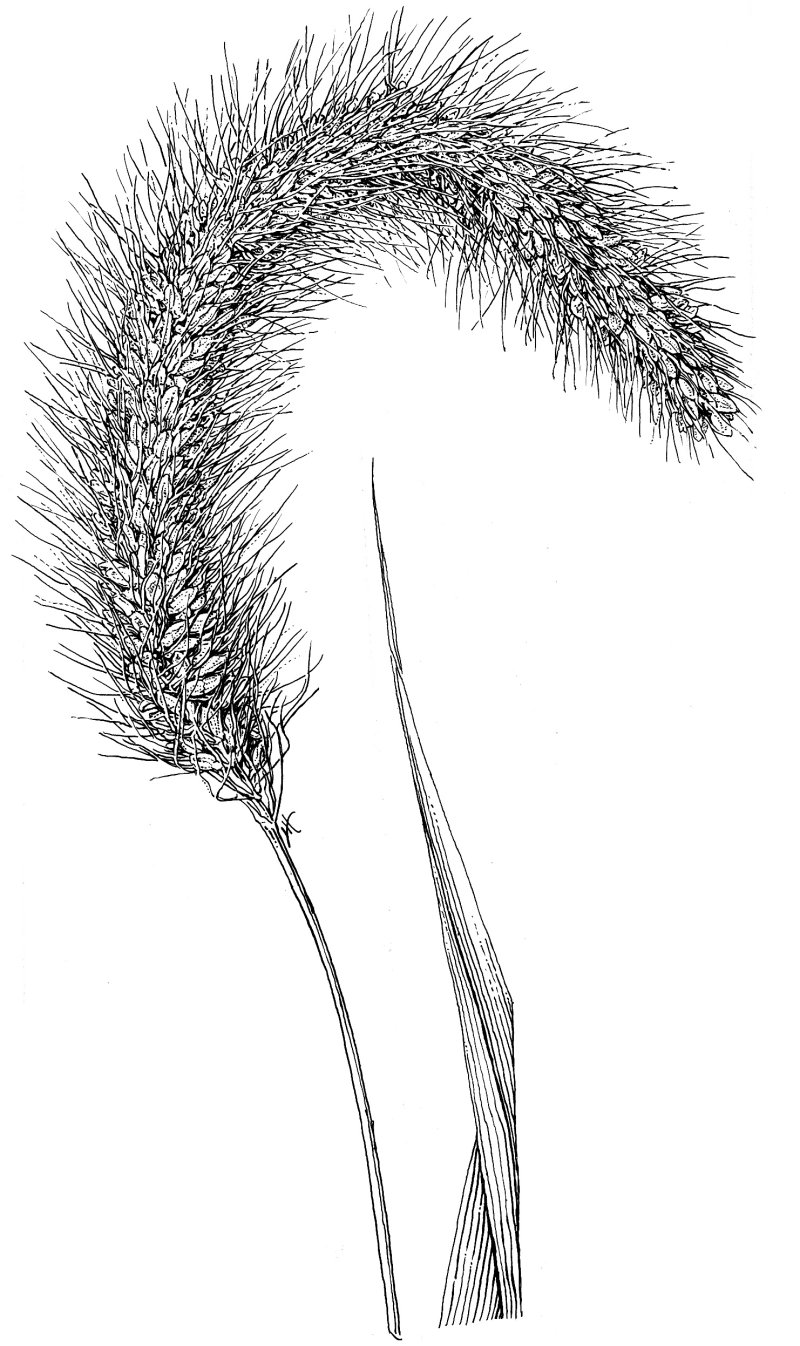
Setaria faberii Herrm. Giant Bristlegrass Habit: Erect, tall tufted annual. Culms: 50-140 cm. tall, simple or branched at the base, erect or spreading, mostly glabrous. Blades: Flat, 5-30 cm. long, -11 mm. wide, linear-lanceolate, not twisted, long-acuminate, glabrous to scabrous below. Sheaths: Shorter than the internodes, keeled, smooth except sometimes towards the summit, ciliate on the margins. Ligule: Fringed membrane, 03-1.4 mm long.. Inflorescence: Panicle erect or somewhat nodding, densely flowered, green or yellowish, cylindric but tapering a little at the summit, usually less than 7 cm. long and 1.2-2.5 cm wide, the axis densely villous with hairs about 1 mm. long, the branches very short bearing mostly 5-6 spikelets, 5 or more upwardly barbed bristles mostly 3-4 times the length of the spikelet, rachis pubescent. Spikelets: 2.2-3.1 mm. long, elliptic, spikelets failing entire. Glumes: First about one third to one fourth the length of the spikelet, 1-1.8 mm long, the second and sterile lemma 1.4-2.3 mm long, the sterile palea not fully developed. Lower floret: Staminate, lemma 2.3-2.8 mm long. Fertile lemmas: Elliptic, 2.2-2.6 mm long, obviously wrinkled, glabrous, palea present and shorter than the lemma. Fruit: Very finely transversely wrinkled or ridged. Habitat: Weed in waste places and cultivated ground. July-September. Kansas Range: Throughout. Remarks: Very common weeds, of some forage value.